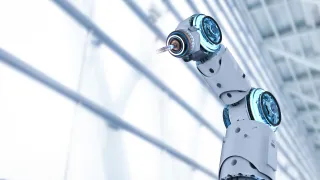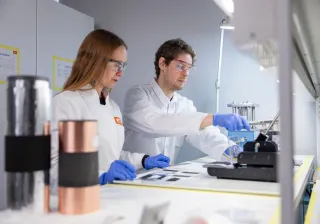Machines and equipment that move autonomously offer many interesting opportunities. When used correctly, they improve productivity and safety, enable flexible operations around the clock, and help reduce dangerous or repetitive tasks performed by people. In order to achieve these benefits, the safety of the systems has to be ensured.
Autonomy does not only mean fully independent systems; it refers to different levels of automation. On the lower levels of automation, people still play a major role in decision-making. For example, everyday features in cars include lane departure warning systems and adaptive cruise control that support the driver's work, but the driver has to be constantly prepared to react to unexpected situations. Moving up to higher levels of automation, the power of decision is transferred to the machine, and at the highest level, the machine performs planned tasks independently in varying conditions.
Such high-automation systems have been used in industry for a long time already. In industrial plants, materials are transported by automatic guided vehicles and automatic forklift trucks, in mines ore is excavated by drilling machines and in ports cranes move containers around tirelessly. However, all of these machines are limited by strict constraints: people's safety is ensured by limiting either the speed or operating area of the machines. Often a machine is completely fenced in a designated area that nobody is allowed to access when the machine is operating. This is a good solution for some locations to improve safety and reduce disruptions. However, this kind of limitation does not serve the purpose of many applications. The objective of autonomy is to improve the flexibility of operations, not to build more fences. But an autonomous machine moving more freely among people and manually controlled machines is a challenging combination. So we want to let the machines out of their cages – but the big question is, how can we do it safely?
We want to let the machines out of their cages – but how can we do it safely?
The autonomy of systems is developed in stages. The safe implementation of automation requires new sensors and software, usually AI as well. And teaching AI requires a lot of high-quality data. In a way, it’s a matter of training the machine: the potential to implement different functions and the extent of decision-making granted to the machine is determined by the capacity of the machine's various subsystems, the amount and quality of the data available, and environmental conditions. Of course, training alone is not enough to ensure safety – tests and assessment criteria also have to be in order: you need comprehensive methods to test and evaluate the functioning of the system in different scenarios and conditions.
Autonomous systems as part of the industrial operating environment are complex entities that require advanced solutions for communication and situational awareness. They combine not only different technologies and their interfaces, but also organisational issues and interaction with people. This is why safety analyses and engineering require a new kind of system-level thinking as well. Traditional fault analyses are supported by new methods that can be used to better take into account the risks associated with the interaction of system components as well as human interaction with the system. Only a comprehensive analysis of safety risks can build the necessary trust to achieve the benefits of autonomy.
The AUTOPORT project, coordinated by VTT, examines the impacts of digitalisation on port logistics. The development and research of autonomous port machinery is a key part of the project. The project develops methods for assessing and ensuring safety and examines the safety requirements of autonomous systems.






